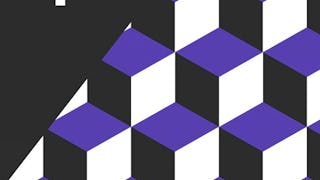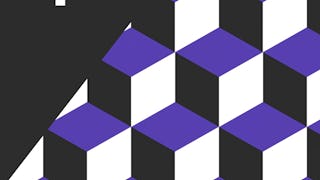Based on an understanding of architectural styles, you will review architectures for web applications, then explore the basics of Service-Oriented Architecture (SOA) in two approaches: Web Services (WS*) and Representational State Transfer (REST) architecture.

Enjoy unlimited growth with a year of Coursera Plus for $199 (regularly $399). Save now.

Service-Oriented Architecture
This course is part of Software Design and Architecture Specialization

Instructor: Kenny Wong
55,835 already enrolled
Included with
(585 reviews)
Skills you'll gain
Details to know

Add to your LinkedIn profile
See how employees at top companies are mastering in-demand skills

Build your subject-matter expertise
- Learn new concepts from industry experts
- Gain a foundational understanding of a subject or tool
- Develop job-relevant skills with hands-on projects
- Earn a shareable career certificate

There are 4 modules in this course
In this module, we will introduce you to service-oriented architectures and their basic principles. Then, you will get a crash course on the technologies that underpin the Web, so that you are ready to learn about web services in the next module. This module also covers some earlier precursors of service-oriented architecture.
What's included
9 videos5 readings1 assignment
WS*-style web services are a "first generation" group of specifications that work together to allow developers to develop and use web services. They are all based on XML. In this module you will learn some of the most important specifications of WS*-style web services: SOAP, WSDL, UDDI, and BPEL.
What's included
5 videos3 readings1 assignment1 peer review
RESTful web services are another style of web services based on lightweight HTTP methods. They have largely superseded WS*-style services because of their relative simplicity. In this module, you will learn about RESTful services and how to design them. You will also learn a bit about microservices, a software architecture for applications that is based on services.
What's included
3 videos2 readings1 assignment1 peer review
In the previous modules, you determined an Android application’s information needs when storing data remotely. Now, in the final module of the course, you will fully connect the application to a remote Elasticsearch server to allow users to share information across their devices. After completing this task, you will be ready to complete the final exam.
What's included
3 readings1 assignment1 peer review
Earn a career certificate
Add this credential to your LinkedIn profile, resume, or CV. Share it on social media and in your performance review.
Instructor

Offered by
Explore more from Software Development
 Status: Free Trial
Status: Free Trial Status: Free Trial
Status: Free Trial Status: Free Trial
Status: Free Trial Status: Free Trial
Status: Free TrialVanderbilt University
Why people choose Coursera for their career




Learner reviews
585 reviews
- 5 stars
67.06%
- 4 stars
21.33%
- 3 stars
7.50%
- 2 stars
1.53%
- 1 star
2.55%
Showing 3 of 585
Reviewed on May 3, 2020
I enjoyed being part of the course. Hats-off to the online mentors and educators around the globe who are helping this far to help us in making progress to our careers. Thank You!!
Reviewed on Sep 7, 2021
this course is very helpful for understanding and getting strong at fundamentals
Reviewed on Aug 3, 2019
Amazing explanation and examples to help understand each concept. Really glad to enroll in this course. I am more knowledgable now than I was.Thank you so much for building this beautiful course.

Open new doors with Coursera Plus
Unlimited access to 10,000+ world-class courses, hands-on projects, and job-ready certificate programs - all included in your subscription
Advance your career with an online degree
Earn a degree from world-class universities - 100% online
Join over 3,400 global companies that choose Coursera for Business
Upskill your employees to excel in the digital economy
Frequently asked questions
To access the course materials, assignments and to earn a Certificate, you will need to purchase the Certificate experience when you enroll in a course. You can try a Free Trial instead, or apply for Financial Aid. The course may offer 'Full Course, No Certificate' instead. This option lets you see all course materials, submit required assessments, and get a final grade. This also means that you will not be able to purchase a Certificate experience.
When you enroll in the course, you get access to all of the courses in the Specialization, and you earn a certificate when you complete the work. Your electronic Certificate will be added to your Accomplishments page - from there, you can print your Certificate or add it to your LinkedIn profile.
Yes. In select learning programs, you can apply for financial aid or a scholarship if you can’t afford the enrollment fee. If fin aid or scholarship is available for your learning program selection, you’ll find a link to apply on the description page.
More questions
Financial aid available,
¹ Some assignments in this course are AI-graded. For these assignments, your data will be used in accordance with Coursera's Privacy Notice.

